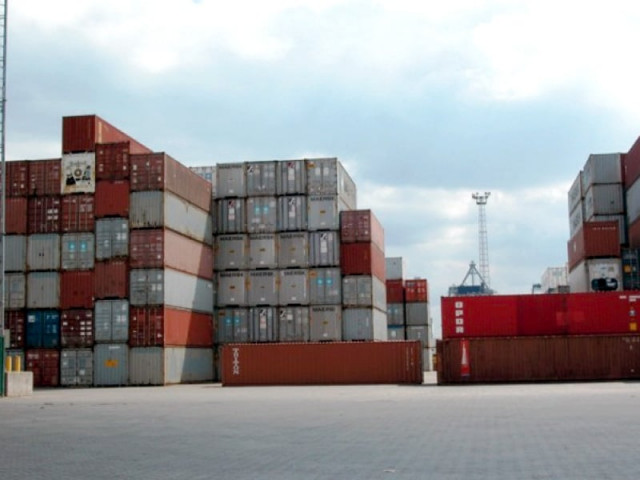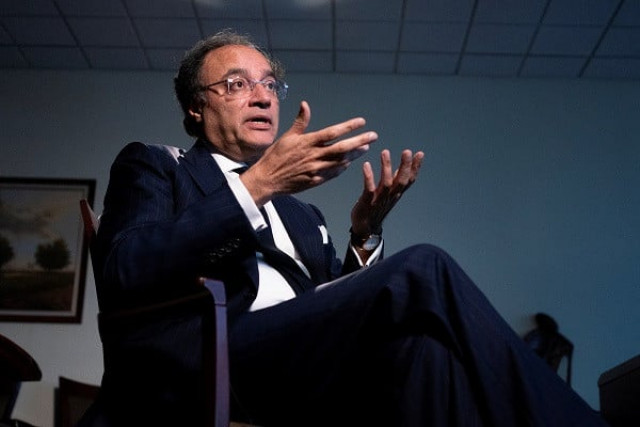Business
Eli Lilly blows past estimates, hikes guidance as Zepbound and Mounjaro sales soar

Eli Lilly on Thursday reported third-quarter earnings and revenue that topped estimates and hiked its full-year outlook, as the company continued to see strong demand for its blockbuster weight loss drug Zepbound and diabetes treatment Mounjaro.
Shares of the company closed more than 3% higher Thursday.
The pharmaceutical giant now expects its fiscal 2025 revenue to come in between $63 billion and $63.5 billion, up from previous guidance of $60 to $62 billion. Eli Lilly also expects full-year adjusted profit to come in between $23 and $23.70 per share, rising from its previous outlook of $21.75 to $23 a share.
Eli Lilly said the guidance reflects President Donald Trump‘s existing tariffs as of Thursday, but does not include his threatened levies on pharmaceuticals imported into the U.S.
Mounjaro raked in $6.52 billion in revenue for the quarter, up 109% from the same period a year ago. That blew past the $5.51 billion that analysts were expecting, according to StreetAccount.
Zepbound, which entered the market roughly two years ago, posted $3.59 billion in revenue for the third quarter. That’s up 184% from the year-earlier period and slightly ahead of the $3.5 billion that Wall Street was expecting, according to StreetAccount estimates.
David Ricks, chief executive officer of Eli Lilly & Co., during a news conference at Generation Park in Houston, Texas, US, on Tuesday, Sept. 23, 2025.
Mark Felix | Bloomberg | Getty Images
In an interview with CNBC on Thursday, Eli Lilly CEO Dave Ricks said the “real star here” of the quarter is tirzepatide, the active ingredient in Zepbound and Mounjaro. Both drugs are leading the U.S. market for obesity and diabetes, he said.
Ricks said the quarterly beat was driven by “really strong international performance,” pointing to Mounjaro’s launch in China, Brazil and India earlier this year.
“What we’re seeing is a global demand for this product,” he told CNBC’s “Squawk on the Street.”
On an earnings call Thursday, Ricks said Eli Lilly gained share in the injectable obesity and diabetes market for the fifth consecutive quarter. The company’s drugs account for nearly 6 out of 10 prescriptions within that class of medicines.
Here’s what Eli Lilly reported for the third quarter compared with what Wall Street was expecting, based on a survey of analysts by LSEG:
- Earnings per share: $7.02 adjusted vs. $5.69 expected
- Revenue: $17.60 billion vs. $16.01 billion expected
The results come as Eli Lilly works to maintain its edge over chief rival Novo Nordisk in the booming market for a class of obesity and diabetes drugs called GLP-1s.
The company posted third-quarter revenue of $17.60 billion, up 54% from the same period a year ago.
Sales in the U.S. jumped 45% to $11.30 billion. Eli Lilly said that was driven by a 60% increase in volume — or the number of prescriptions or units sold — for its products, primarily for Mounjaro and Zepbound. That was partially offset by lower realized prices of the drugs, the company said.
The pharmaceutical giant booked net income of $5.58 billion, or $6.21 per share, for the third quarter. That compares with net income of $970.3 million, or $1.07 per share, a year earlier.
Excluding one-time items associated with the value of intangible assets and other adjustments, Eli Lilly posted earnings of $7.02 per share for the second quarter.
The results underscore Eli Lilly’s strong advantage in the booming GLP-1 drug market.
The company has gained the majority market share over the last year, thanks to the strong profile of its weight loss and diabetes injections and a boost from its direct-to-consumer sales, among other efforts. Eli Lilly took another stride to boost access to Zepbound on Wednesday, partnering with Walmart to offer in-store pickup of discounted vials of the drug for cash-paying patients.
In the interview, Ricks said Eli Lilly plans to expand its direct-to-consumer and cash-pay offerings for its drugs.
The company is now betting on its closely watched experimental obesity pill, orforglipron, to solidify its dominance in the space, especially as Novo Nordisk and other drugmakers race to bring their own pills or next-generation injections to the market.
“We’ve been ramping both production and planning for really a broad global rollout upon regulatory approval,” Ricks told CNBC, referring to orforglipron’s launch.
On Thursday, Novo Nordisk launched a rival bid for U.S. obesity biotech company Metsera, hijacking an offer from Pfizer as it races to catch up to Eli Lilly.
When asked about competition, Ricks said on the earnings call that “of course, everybody would like to be in our position, but we’re focused on defending it and mostly just executing the play we have.”
Business
Panel questions IndiGo, DGCA babus, gets ‘unconvincing’ replies | India News – The Times of India

New Delhi: IndiGo was quizzed on Wednesday by a parliamentary committee over the misery inflicted on passengers by its mass-cancellation of flights, but it blamed a variety of factors, including system glitch and adverse weather conditions, while DGCA and the aviation ministry parried off criticism of their role in the fiasco.Some committee members termed replies of different stakeholders as “unconvincing” and aimed at washing their hands of the crisis, encapsulated by the response of a govt official that he first came to know of the unfolding ordeal through media reports.The panel, headed by JDU’s Sanjay Jha, decided to wait for the report of an inquiry ordered by DGCA before coming to a conclusion and make its recommendation. It will hold another meeting and is expected to call these stakeholders again. The DGCA-ordered committee was constituted on Dec 5 and was asked to submit its report in 15 days.Captain Sam Thomas, president of Bengaluru-based Airline Pilots Association of India, created flutter at the meeting by alleging corruption in DGCA and was asked by members to refrain from making sweeping allegations without producing evidence. He alleged that one can commit any wrong, but stay safe if he touched right feet.A committee member said IndiGo, which has offered apology for the ordeal, was far from apologetic in its response before the panel. It told the panel that several factors combined to derail its operation, including a glitch in system, which needed rebooting, and adverse weather that had their pilots stuck in different zones.IndiGo was represented by its COO Isidre Porqueras, while officials of Air India, Akasa Air, Spice Jet and Air India Express appeared before the panel as well. Civil aviation secretary Samir Kumar Sinha and top functionaries of other stakeholders were part of the deliberations.Replying to a query, IndiGo said all luggage, except 52 which remained unclaimed, have already been delivered.The panel’s meeting came against the backdrop of the suspicion, subject of investigation, that IndiGo remained resistant to the implementation of guidelines (Flight Duty Time Limitation) that allowed more rest for pilots in line with global norms aimed at ensuring flyers’ safety.It has been accused of engineering the disruption, leveraging its market dominance, to force the ministry to roll back the regulation as implementing it would have required the airline to hire more pilots. Faced with chaos caused triggered by disruption of IndiGo’s operations, DGCA had to relax the implementation of the guidelines.IndiGo management is reported to have denied allegation in meetings with ministry.
Business
Historic Green Milestone: Indian Railways Achieve 99.2% Electrification, Leaves UK, Russia And China Far Behind

New Delhi: Indian Railways has reached a milestone in its journey toward sustainable transportation, achieving electrification of 99.2 per cent of its broad gauge network. This puts India ahead of major rail economies such as the United Kingdom, which stands at 39%, Russia at 52% and China at 82%, according to a press release from the Ministry of Railways.
The achievement brings the country closer than ever to operating a fully electrified railway system. Fourteen railway zones, including Central, Eastern and Northern Railways, have already achieved 100% electrification. In addition, 25 states and union territories have completed electrification across their rail networks.
Data provided in a written reply to the Lok Sabha highlights the rapid pace of this transformation. Between 2014 and 2025, India electrified 46,900 route kilometres, more than double the 21,801 route kilometres completed in the previous six decades.
In the past two years alone, 7,188 route kilometres were electrified in 2023-24 and 2,701 route kilometres in 2024-25.
The environmental benefits of this transition are major. Rail transport emits 89% less CO2 than road transport, and Indian Railways is complementing electrification with renewable energy initiatives. So far, 898 MW of solar power has been commissioned at 2,626 stations, reinforcing India’s commitment to a greener transportation network.
Electrification is advancing consistently across zones. The Central, East Coast, East Central, Eastern, Konkan Railway, Kolkata Metro, North Central Railway, North Eastern Railway, Northern Railway, South Central Railway, South East Central Railway, South Eastern Railway, West Central Railway and Western Railway have achieved full electrification.
Other zones, such as North Western, Southern, Northeast Frontier and South Western Railway, have crossed 95% electrification.
The progress is equally impressive state-wise as well. Most states are fully electrified, while Rajasthan, Tamil Nadu and Karnataka are nearing completion. In the North Eastern region, the broad gauge networks in Arunachal Pradesh, Meghalaya, Nagaland, Tripura and Mizoram have been 100% electrified, while Assam stands at 92%, with work underway to complete the remaining sections.
All new rail lines and multi-tracking projects are now being sanctioned with electrification integrated from the beginning. According to the Ministry of Railways, the completion timeline for electrification projects depends on factors such as forest clearances, relocation of utilities, statutory approvals, geological and topographical conditions, law and order situations and climatic constraints, which can affect progress at different project sites.
Beyond expanding connectivity, electrification is central to India’s sustainability agenda. The move to electric rail corridors is helping dramatically cut carbon emissions. For instance, transporting 1 tonne of freight over 1 km emits 101 g of CO2 by road, compared with just 11.5 g by rail, an almost eightfold reduction.
The Indian Railways aims for 100% electrification while contributing to the nation’s goal of net-zero carbon emissions by 2030. Every new rail project now includes electrification from the outset, ensuring that India’s railway system grows greener, more efficient and globally competitive.
Business
Medical supply firm Medline jumps more than 30% in debut after biggest IPO of 2025

Shares of U.S. medical supplies giant Medline jumped more than 30% in its debut on the Nasdaq on Wednesday after the biggest initial public offering of the year globally.
The stock opened at $35, up from its $29 IPO price.
The private equity-owned company sold a little over 216 million shares on Tuesday, raising $6.26 billion in an upsized offering that finished off a strong year for new listings and bolstered optimism about the IPO market in 2026. Shares of Medline will trade under the symbol MDLN.
That IPO pricing gives Medline a market value of at least $37 billion, based on the shares listed in its regulatory filings.
“Historically, we’ve done very little advertising, very little marketing, and this gives us a way to amplify our voice and actually expand really the receptivity of who we are,” Medline CEO Jim Boyle told CNBC’s “Squawk Box” earlier Wednesday. “We are the largest company you’ve never heard of, and we happen to be everywhere. And that’s a really interesting thing.”
The U.S. IPO market has held steady despite market volatility in the spring, driven by President Donald Trump’s sweeping tariffs, and the longest U.S. government shutdown in history in the fall. Just over 200 IPOs have priced this year, including Medline, which is the largest U.S. listing since Rivian‘s $13.7 billion deal in November 2021, according to data compiled by CNBC.
But Medline’s IPO is also among the biggest private equity-backed listings. Three private equity firms — Blackstone, Carlyle and Hellman & Friedman — acquired a majority stake in the company in 2021 for a whopping $34 billion. At the time, the deal was the biggest leveraged buyout since the financial crisis.
CEO Jim Boyle celebrates with others as medical supplies giant Medline (MDLN) holds it’s IPO at the Nasdaq stock market site in Times Square in New York, Dec. 17, 2025.
Shannon Stapleton | Reuters
Medline, founded in 1966, is based in Northfield, Illinois. The company manufactures and distributes roughly 335,000 different medical and surgical supplies — from gloves, masks and scalpels to wheelchairs. Medline has customers in more than 100 countries and, as of the end of 2024, employed more than 43,000 workers worldwide.
Medline’s total debt was around $16.8 billion as of late September 2025. The company raked in $25.5 billion in net sales in 2024.
Medline’s earlier plans to go public this year were postponed due to uncertainty around tariffs affecting products from Asia. The majority of the company’s products are sourced or manufactured in Asian nations, particularly China.
Medline expects a $150 million to $200 million hit from tariffs to income before taxes in fiscal 2026.
The company competes with names like McKesson and Cardinal Health.
— CNBC’s Gina Francolla contributed to this report
-

 Business4 days ago
Business4 days agoHitting The ‘High Notes’ In Ties: Nepal Set To Lift Ban On Indian Bills Above ₹100
-

 Politics1 week ago
Politics1 week agoTrump launches gold card programme for expedited visas with a $1m price tag
-

 Tech1 week ago
Tech1 week agoJennifer Lewis ScD ’91: “Can we make tissues that are made from you, for you?”
-

 Business1 week ago
Business1 week agoRivian turns to AI, autonomy to woo investors as EV sales stall
-

 Sports1 week ago
Sports1 week agoPolice detain Michigan head football coach Sherrone Moore after firing, salacious details emerge: report
-

 Business1 week ago
Business1 week agoCoca-Cola taps COO Henrique Braun to replace James Quincey as CEO in 2026
-

 Fashion1 week ago
Fashion1 week agoTommy Hilfiger appoints Sergio Pérez as global menswear ambassador
-

 Tech1 week ago
Tech1 week agoGoogle DeepMind partners with UK government to deliver AI | Computer Weekly











